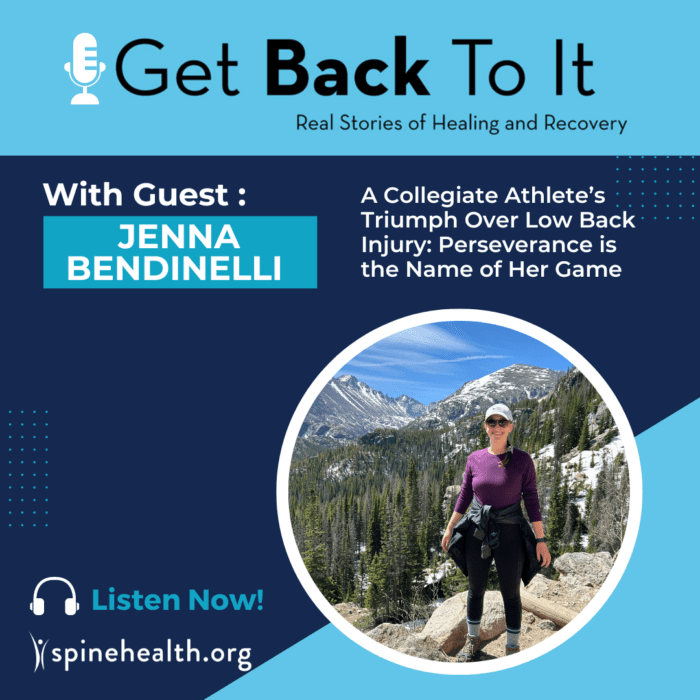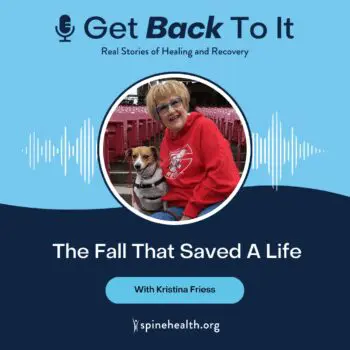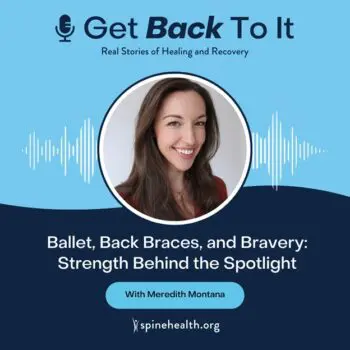Summary:
As a collegiate field hockey player, Jenna’s overtraining resulted in a torn L5-S1 disc. After an eight-month journey, she saw many providers, including doctors, chiropractors, acupuncturists, and physical therapists. To relieve her pain, she turned to non-surgical treatments. These included epidurals, an SI injection, facet injections, nerve ablation, and a second SI injection.
The pain subsided for four years when she returned to running, lifting, hiking, skiing, coaching, playing field hockey, and volleyball. But one day, while sitting at her desk, a recognizable deep pain seared into her lower back, initiating what would become an additional 2-year journey for relief.
An MRI showed a very damaged disc, and it was time to see a surgeon. Jenna was given the choice of a lumbar fusion or disc replacement. After a second opinion, and with the support of both surgeons she decided that the L5-S1 disc replacement was her best option to return to an active lifestyle. At just 26 years old Jenna had the surgery, and in just six weeks of recovery, she began physical therapy to build core strength. Three months after surgery, Jenna was able to increase her activity. She experienced a small setback with SI joint pain which she managed with a steroid injection.
At six months post-op, she was cleared of all restrictions and started jogging, snorkeling, hiking, hitting golf balls, and skiing.
Tune in to listen to her inspiring journey of patience, perseverance, and hope.



